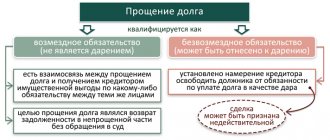General rules
In a limited liability company, the decision of a participant to transfer his share implies his further withdrawal from the company. Such a procedure is acceptable if there is a clause about this in the charter.
Otherwise, changes will need to be made to the charter to allow the withdrawal of a participant and then appropriate actions will be taken. Partial alienation of shared ownership does not entail exit from the company.
The redistribution of shares in the company, regardless of the method of their transfer, is reflected in the constituent documents by making appropriate changes.
The situation is different in a joint stock company. Here, participants own a portion of the capital corresponding to the par value of their shares. The transfer of a share to another participant does not entail a change in the charter of the JSC. Redistribution occurs only within the enterprise.
Share owned by the company
So, the participant left the LLC, and his share transferred to the company. It’s good if the owners were able to quickly build it or distribute it among themselves. But in practice this does not always happen. If the fate of the share has not been decided within a year, it must be repaid.
Cancellation of a share involves reducing the authorized capital by its nominal value. For example, the capital amounted to 100 thousand rubles and belonged in equal shares to four owners. One of them left the LLC, but a year later his share has still not been distributed or sold. In this case, it must be repaid. In this example, this means that it is necessary to reduce the authorized capital by 25 thousand rubles and redistribute shares between participants. The new capital will be 75 thousand rubles. Since there are three owners left, each of them will own 1/3 of the share with a nominal value of 25 thousand rubles.
Paid alienation
The law secures the right of a participant in an organization to realize his or her share of property in the enterprise, imposing some restrictions on the procedure. Only the paid part of the authorized capital is subject to sale. The co-owner has the right to sell his part in the LLC:
- The actual share owner of the organization that the founder intends to leave.
- To third parties – if this is provided for by the company’s statutory documents.
- Directly to the community.
If the charter contains permission to alienate a share in favor of a third party, the co-owners of the company have a preemptive right to redeem it. The cost of the alienated part can be:
- valid;
- fixed;
- designated by the retiring founder.
The first option arises when selling a share of property to a person in the company and consists of the totality of a part of the authorized capital (within the alienated share) and net assets. The second type of value is determined by the company’s charter and also applies only to the participants of the organization.
The founder has the right to announce his value of shared ownership, which is the same for all interested parties. The waiting period for a response from existing members of the enterprise is 30 days. If the founders have no desire to purchase the part put up for sale, then the participant has the right to make a similar offer to third parties (in the absence of a prohibition on alienation in the charter).
Sometimes it is not possible to transfer a share in an LLC to another member. For example, due to the co-founder’s refusal to purchase it at the stated price. Whereas the charter documents prohibit the alienation of shared ownership to third parties. In this case, the law obliges the company to buy out the share of the leaving member of the organization independently.
The company also has the right to acquire the shared ownership of a participant at his request if the participant does not agree with the decision taken at the general meeting to increase the authorized capital or enter into a major transaction.
When purchasing a share from a co-owner, the organization must distribute or sell the purchased portion among the participants during the first year. The transfer of a company's share to a single participant is carried out by purchasing it at its actual value.
A unanimous decision to lift the ban on attracting third parties to the company will speed up the process of selling the acquired share. Otherwise, changes are made to the constituent papers to reduce the authorized capital by the amount of the value of the share held by the company. If, as a result of the procedure, the authorized capital falls below the minimum fixed by law, then the company is subject to liquidation.
The legislative framework
A limited liability company is a commercial organization whose main purpose is to make a profit. In the course of the business activities of a company, situations may arise in which the property of one of the participants is transferred to another, for example, under a purchase and sale agreement, donation, inheritance, etc.
All issues regarding the transfer and distribution of shares are regulated by the following regulations:
- Law 14-FZ “On Limited Liability Companies”.
- Civil Code of the Russian Federation.
In addition, the procedure for distribution of shares is also regulated by the company's charter. In individual regions, the norms for the distribution of company shares may be different, but these differences are not significant. As a rule, the provisions of these documents are the same throughout the Russian Federation and only the procedure for documenting the relevant transaction is taken into account.
Documentary support
Based on the preemptive right, shared ownership is initially alienated to interested members of the organization in parts proportional to their shares in the authorized capital. Any other distribution is permitted provided that the relevant provisions are in the articles of association. Step-by-step instructions for the alienation procedure:
- A general meeting of members of the administrative management is preliminarily held, where a decision is made to change the composition of participants associated with the alienation of shared ownership.
- A protocol is drawn up on the transfer of the share to the participant in accordance with the previously made decision, where all participants in the administrative staff of the company sign.
- When selling shared ownership, the parties are required to draw up an agreement on the transfer of a share in the LLC to another participant. All persons to whom the alienated share is transferred take part in the transaction.
- Members of the administrative management who are not involved in the purchase and sale procedure are required to provide a notarized written waiver of the right to redeem the share.
- The transaction is subject to notarization.
- The general director of the enterprise signs and seals copies of the agreement and related documentation.
- Based on the collected set of documents, form 14001 is filled out, in which the data of the participants is recorded, and the transfer of the share is displayed. To avoid mistakes when filling out papers, you can use the appropriate sample.
- The application is certified by a notary. The completed documentation is submitted to the tax authority.
In 2021, all transactions for the sale of part of the authorized capital require the mandatory presence of a notary representative.
Transfer of a participant's share to a company is possible without a notary only in cases of change of founders. The method is applicable when one share owner enters and leaves at the same time.
The procedure for the withdrawal of an LLC participant from the company
Despite the fact that each participant in a business company has the right to leave the organization, the state establishes certain requirements that must be met. In particular, a free exit from the company can be in those situations where this procedure is prescribed in the statutory documentation.
If this circumstance is not in the charter, then in this case, exit from the company can be carried out in agreement with all the founders of the company, or by decision of the courts.
As for the procedure for the exit of participants from the LLC, it is prescribed in Article 26 of Federal Law No. 14. In accordance with the legislative recommendations provided for by these standards, the exit procedure should be carried out in stages:
- Checking a company participant for the possibility of leaving the LLC. First, it is necessary to determine which procedure will be applicable for the withdrawal of a participant from the LLC in a given case. If the charter provides for the free withdrawal of founders from the organization, then the process will be quick, but if the statutory documentation does not establish any requirements, then in this case it will be necessary to reach a consensus with the remaining founders or go to court.
- At the second stage, the applicant for leaving the organization must submit an official written notice to the executive management structures of the company (often this is the general director of the association). The application has a prescribed form, so it must be filled out in compliance with all legal regulations;
- After the application is submitted for consideration to the management structures of the LLC, and is accepted in accordance with the rules of law, the applicant for exit is required to receive a written protocol stating that within three months from the date of submission of the document, the company undertakes to pay it off in full by returning his share of capital in cash specified in the protocol;
- After all issues of interaction between the company and its former participant have been resolved, their joint work is officially terminated, and the founder finally leaves the company’s membership.
When following the procedure for leaving the organization, special attention must be paid to the form and content of the written application.
The law stipulates that it must be submitted exclusively in writing and bear the personal signature of the applicant.
At the same time, the application has a certain form, and therefore it must be filled out with an eye to all the legislative features of this process.
Essentially, this need arose because, in most cases, a written statement is the only factual evidence that a participant voluntarily decides to leave the society.
Other alienation options
The participant has the right to give away his share free of charge by registering the alienation in one of the following ways:
- upon leaving the administrative structure of the company;
- under a gift agreement.
The transfer of a share to a company upon the withdrawal of a participant provides for the obligatory payment to the latter of part of the authorized capital and the actual value of the property owned by him. The income received is subject to taxation.
If the process of alienation of a share is initiated by a legal entity, then the company is obliged to pay taxes within the framework of the applicable tax system.
In practice, it is possible to transfer a share to the company free of charge upon the withdrawal of a participant if he noted in his application that he refuses to pay the actual value of his part. The share transferred to the company is its non-operating income and is subject to taxation.
In order to avoid potential lawsuits from a withdrawn member of the company who has changed his mind about leaving his share free of charge, it is necessary to first take not only the written refusal of the former member, but also the consent of the spouse to alienate the share without payment.
The legislation allows the transfer of a participant’s share to the company without payments from the latter in the following cases:
- Unlawful transfer of part of the property to third parties (without the consent of the remaining participants).
- In case of violation of the prohibition on the alienation procedure specified in the charter of the enterprise.
The gratuitous transfer of a share in an LLC to another participant under a gift agreement can be carried out both within the organization and with the involvement of a third party. The law does not oblige the leaving member of the company to coordinate his plans for drawing up a gift agreement with the company or the current administrative staff, unless otherwise provided by the constituent documents.
When donating a share to a close relative or family member, taxation does not apply. Withdrawal from LLC participants with the transfer of shares as a gift is subject to notarization.
What do you need to do to exit an LLC?
In order to leave the company, it is enough to draw up an application addressed to the general director in free written form and submit it to management, having this document certified by a notary. In the text of the application you must indicate personal information: full name, passport details, address of residence if the participant is an individual, and registration details of the organization if the participant is a legal entity. Next, in the body of the application, you must express and preferably justify your desire to leave the company and receive compensation equivalent to the value of your personal share.
From the moment the company receives an application to withdraw from the LLC, the participant’s share passes to the organization, therefore, the original and the applicant’s copy must be marked with the date of acceptance of the application. If the application is sent by mail, the letter must be “accompanied” by a return receipt.
At this point, the participant’s active actions end, and he can only wait for the due payments, which must be transferred to the account or handed over personally no later than three months, calculated from the moment management accepted the application. The cost of the share can be paid either in monetary terms or, with the consent of the former participant, in kind.
Succession
Part of the company's property is subject to transfer to third parties in the following cases:
- death of an individual;
- liquidation of the organization.
The heirs have only the unconditional right to receive the actual cost part that belonged to the former member of the organization. The introduction of new persons into the administrative management is possible only with the full consent of the existing participants of the enterprise.
If the liquidated organization does not have legal successors, then the property that has not been transferred to creditors is redistributed among the participants of the organization subject to closure.










